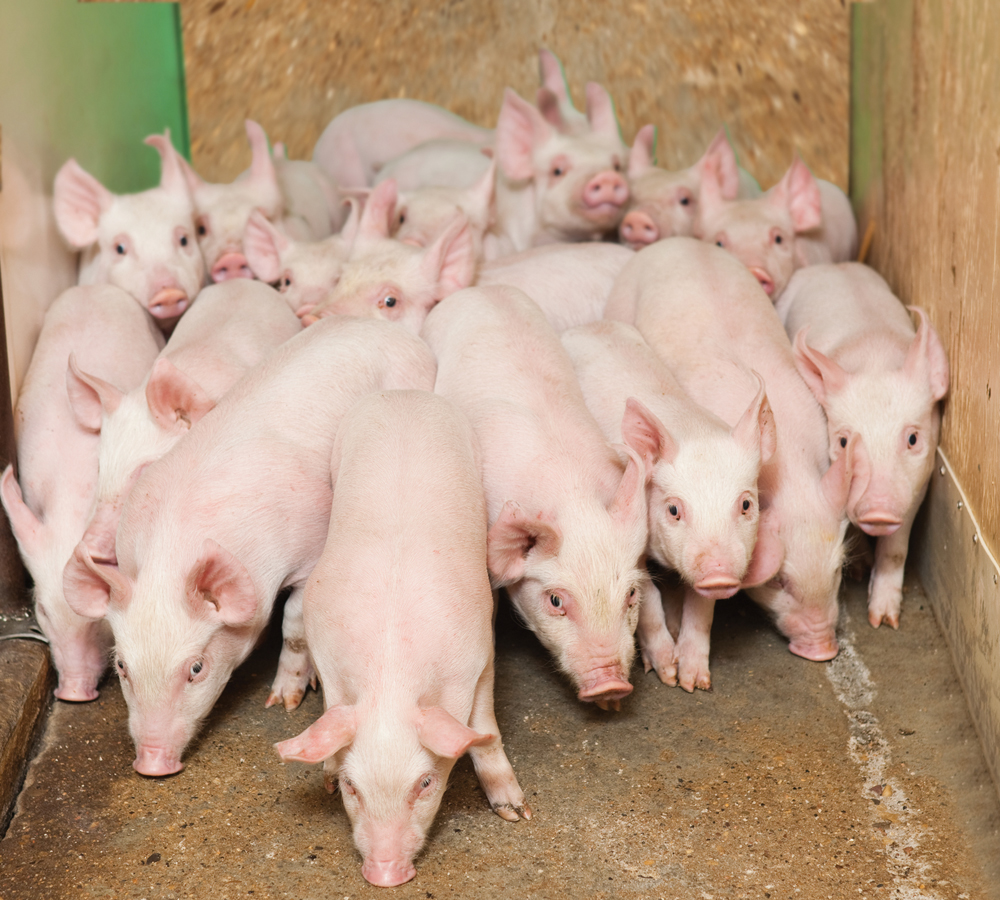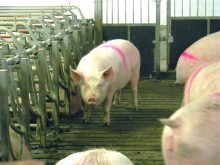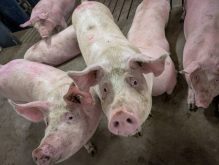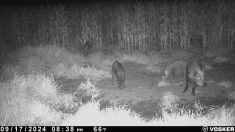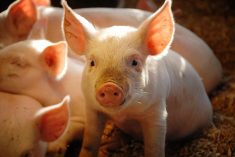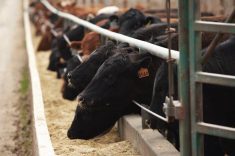When it comes to finding expert advice on biosecurity, cattle producers might want to sit down with their local hog farmer.
The country’s outstanding record on controlling the porcine epidemic diarrhea virus has a host of lessons for the cattle sector, says a swine veterinarian who was deeply involved in Alberta’s battle against PEDv.
Start with the fact that everyone got on board, Dr. Egan Brockhoff told attendees at Livestock Gentec’s field day here.

“Almost every single pork producer in Canada took part in a national biosecurity training program and was audited,” said Brockhoff, a swine veterinarian with Prairie Swine Health Services.
“That’s never happened before in the world. There’s never been a case where every single farmer who owned pigs participated.”
This sort of co-operation was spread across the entire sector.
“Canada was quite fortunate because we had the Canadian Swine Health board that was dedicated to nothing other than keeping the health of the Canadian pork industry at the top in the world,” he said. “That was its job, and it had huge co-operation across the country.”
The numbers tell the story.
In the U.S., the virus, which kills piglets and severely weakens sows, spread like wildfire — infecting thousands of farms and killing eight million pigs. Based on the relative size of its hog sector, Canada should have had about 1,000 cases. But the total is just 109.
Read Also

Pig transport stress costs pork sector
Popular livestock trailer designs also increase pig stress during transportation, hitting at meat quality, animal welfare and farm profit, Agriculture and Agri-Food Canada researcher says
And a fifth of those came right at the start of the crisis in January 2014, when the virus showed up at 20 Ontario farms in a short period. All turned out to have purchased feed tainted with infected porcine plasma from the same feed mill.
“That’s not the first time this has happened in the Canadian livestock industry,” said Brockhoff. “But the lesson learned is, ‘How often do we talk about feed biosecurity?’”
The No. 1 risk
That wasn’t the only question being asked, Brockhoff told the field day attendees at Agriculture and Agri-Food Canada’s Lacombe research station.
“The risk factors are something that we started to identify early on. This is where I ask you to think about your own industry: How can you mitigate risk factors?”
The single biggest thing you can do to lower risk is to be cautious when purchasing new animals.
“That is the absolute king,” said Brockhoff. “You go out, buy a new animal, bring it to your farm and what it has, you now have. And vice versa. That’s a No. 1 risk.”
So what does being cautious mean?
For Brockhoff’s clients that means having him call the vet of the producer who is selling pigs. The two vets will talk about health and herd compatibility and if there’s any risk, the sale doesn’t happen and the pigs don’t move.
Another huge change is transport biosecurity.
Brockhoff, who grew up on a large feedlot and cow-calf operation in central Alberta, has never seen a cattle liner that’s been properly washed, dried and disinfected in his 40-plus years.
But that’s the standard in the hog sector even though “it takes a lot of work to wash out every pork livestock trailer in Canada and the United States.”
“Canada produces nearly 30 million pigs, the U.S. nearly 10 times that. There are more swine transports on the road than any thing else in the North American livestock industry and we’re trying to make sure we wash every single one of them.”
Canada is fortunate because it uses fresh water in truck washes because recycling water (which is done in the U.S.) helps spread viruses and bacteria. But even then, washing and disinfecting can’t completely eliminate viruses. So thermal-assist drying is recommended — which means putting a trailer inside a building heated to 35 C for at least 90 minutes. In Alberta, there’s now a new mobile baking unit for trailers that heats the trailer’s surfaces to 70 C. While baking the viruses effectively kills them, freezing has no impact.
“Only when you clean, wash, disinfect, and dry these transports do you make them virus free or as close to that as possible,” said Brockhoff.
The washing of livestock transports in the pork industry is now audited.
A surprising danger
But it’s not just the big and obvious sources of potential contamination that have come under scrutiny.
“The smartphone has become one of our greatest disease-carrying agents. There was a super-cool study published in the U.K. a couple of years ago… 25 per cent of the cellphones sampled from people who lived in the city of London had fecal material on the surface.
“Those are Londoners, so I don’t know what that means. But for those of you who work with livestock routinely, I’m going to guess those numbers are even higher, if you’re hanging out with livestock all the time.”
One of the big things that helped prevent the spread of PEDv was communication across the sector. The Canadian Swine Health Intelligence Network, which monitors data on pig health, was key and so were education initiatives.
But the two most vital things were having the right attitude and being determined to do whatever it took to fight PEDv, he said.
“Of the 109 sites that have been affected in Canada with PEDv, about half of them are now negative,” said Brockhoff. “We are going to kick this virus out of Canada. It’s endemic to the U.S. and will be there for a long time but in Canada, we expect to have this virus gone.”





